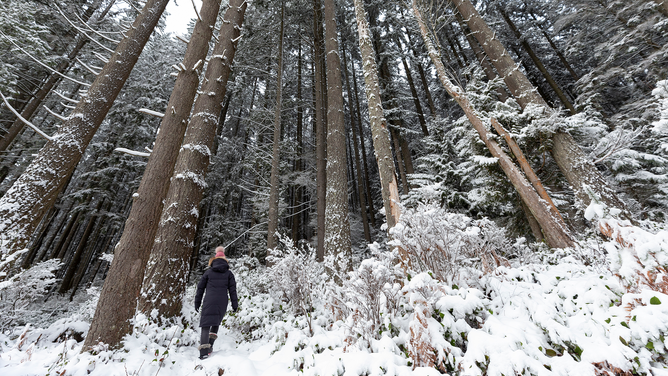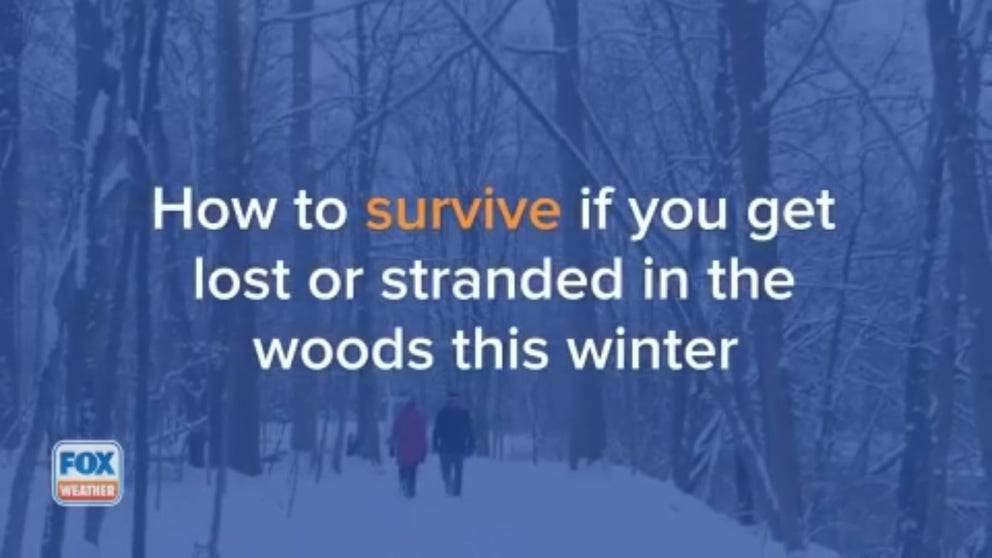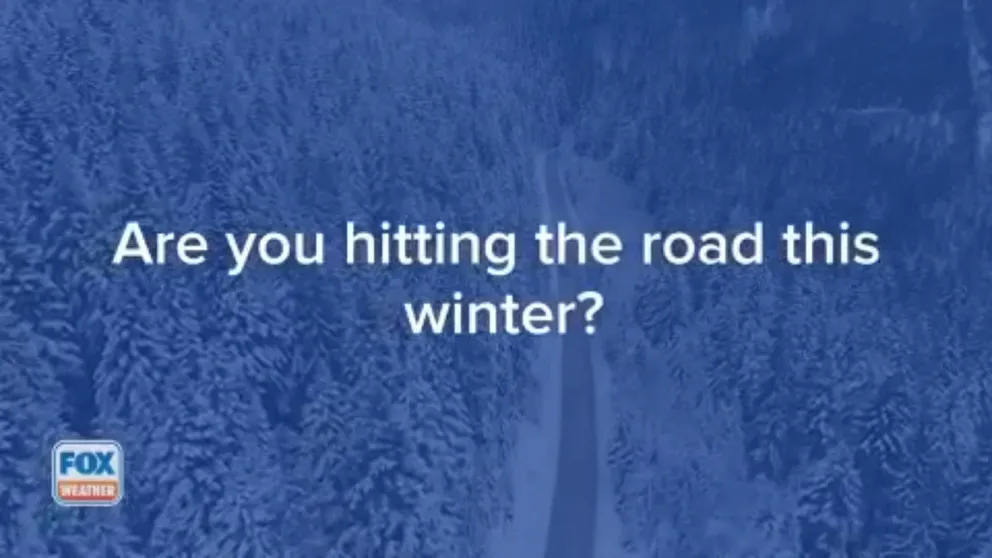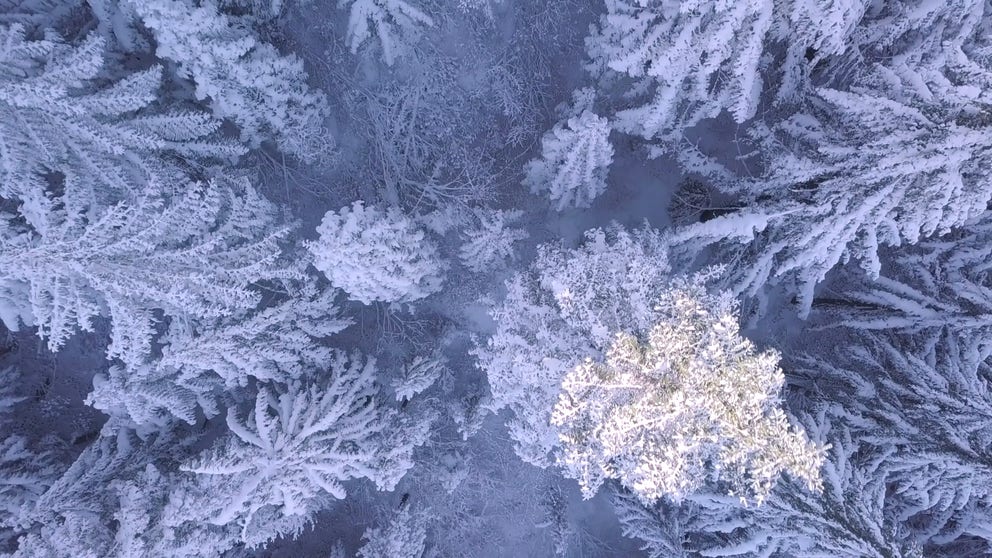Here's how to survive if you get lost in the woods this winter
Whether you're hiking through the woods or taking a drive along a scenic highway, your preparation beforehand and actions after getting lost or stranded can make all the difference.
How to survive if you get lost or stranded in the woods this winter
Are you going on a hike in the woods this winter to check out the scenery? Be sure to prepare for whatever Mother Nature may throw your way.
If you’re among the droves of nature lovers who will be out in full force this winter to take in the majestic and serene sights after snow falls, whether it be on a hike or a scenic drive, then you’ll want to take the proper precautions to ensure your survival if you get lost along the way.
Prepare for the worst if you're going hiking

FILE - PORT MOODY, BRITISH COLUMBIA - DECEMBER 26: A woman walks through a snow-covered forest on December 26, 2021 in Port Moody, British Columbia, Canada.
(Andrew Chin / Getty Images)
The U.S. Forest Service says everyone going out to enjoy the sights, even if it’s only for a few hours, needs to pack enough essentials so that they can stay hydrated and prepared for whatever Mother Nature may throw their way.
Here’s a list of essentials that the USFS says you should always have on hand:
- More than enough food and water for your planned activity
- A compass that you’re familiar with. While you may also use a GPS or cell phone, you may not have service or the battery may die
- Maps
- Proper clothing that you can layer, good footwear like boots and extra socks in case the ones you wear get wet
- A blanket, flashlight and matches in a waterproof container to help you survive if you're stuck outdoors overnight
- Check with local forest rangers for any warnings like a wildfire threat in your area, bear sightings or closed roads and trails
TRAVELING THIS WINTER? HERE'S WHAT TO KEEP IN YOUR CAR IN CASE YOU GET STUCK
You got lost in the woods: Here's what to do first
Important items to keep in your car this winter
Are you hitting the roads this winter? Here are some important items to keep in your car when you head out on the roads.
If you do become lost or stranded, remain calm and don’t panic. The USFS says the most important tool is to maintain a positive mental attitude.
As soon as you realize you’re lost or stranded somewhere, stop moving. Panic is the greatest enemy, and that’s where things can go downhill fast. Remain calm and stay where you are.
The next thing the USFS says you should do is to think. Do you remember how you got to where you are? Should you be able to see specific landmarks from your location? Don’t move until you have a reason to.
Next, you should get out your compass to determine the directions from where you’re standing.
And if you find yourself lost on a trail, stay on it. All trails are marked with signs where they intersect with one another.
And as a last resort, follow a river, stream or drainage pipe downhill. It could be a difficult path and can also be dangerous, but it could lead you to another trail or road.
It’s also a good idea to plan out your course of action. Based on what you’re experiencing and what you see, think of a plan to get yourself to safety and be sure to think them through before acting on one of them.
But the USFS says if you’re not familiar with where you are, it’s getting dark, you’re injured or exhausted, it’s better to just stay put.
Experience the serenity of falling snow in these peaceful scenes
Sit back and relax for 90 seconds of peaceful falling snow.
Are you going to rescue yourself? Follow these tips
The USFS says that if after all your planning and thinking you decide to rescue yourself, you need to remember several things.
First, you need to stop and rest if you feel tired, and don’t wait until you’re already exhausted to rest.
It’s also a good idea to stop and rest for at least 30 minutes if you’re pausing to eat and drink.
And always remember to stay hydrated.
If you’re injured or not feeling well, be sure to stop. If you ignore what your body is telling you, the illness or pain will only get worse and make your trek back to safety that much more difficult.

FILE - A man is seen standing in a foggy forest.
(James Kovin on Unsplash / FOX Weather)
How to signal for help
If you do go out into the woods this winter and become lost or stranded, there are a few different ways you can signal for help.
One of those ways, according to Field and Stream, is by blowing a whistle.
Noise from a whistle travels much farther than a human voice, and there are two versions you can choose from – with or without a pea inside.
"Opt for the latter," according to Field and Stream. "As in cold weather, the moisture from your breath could freeze the pea inside the whistle, rendering it useless."
If the sun is shining and you’re lost, you can also signal to rescuers with the use of a mirror.
A signal mirror has a hole in the middle and that’s used for aiming the beam of light.
You can also start a fire, as the flames can be seen at night with smoke visible during the day.


